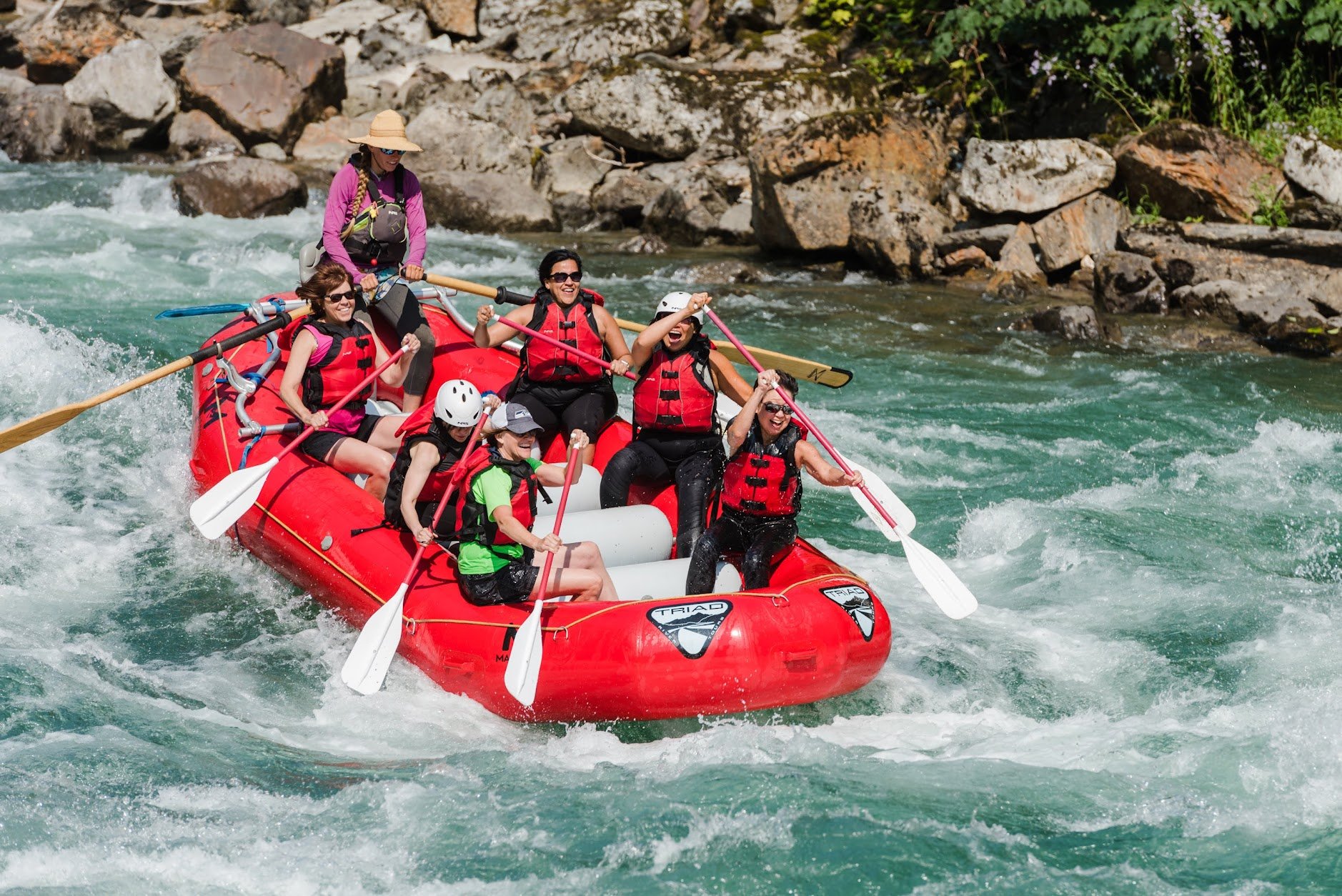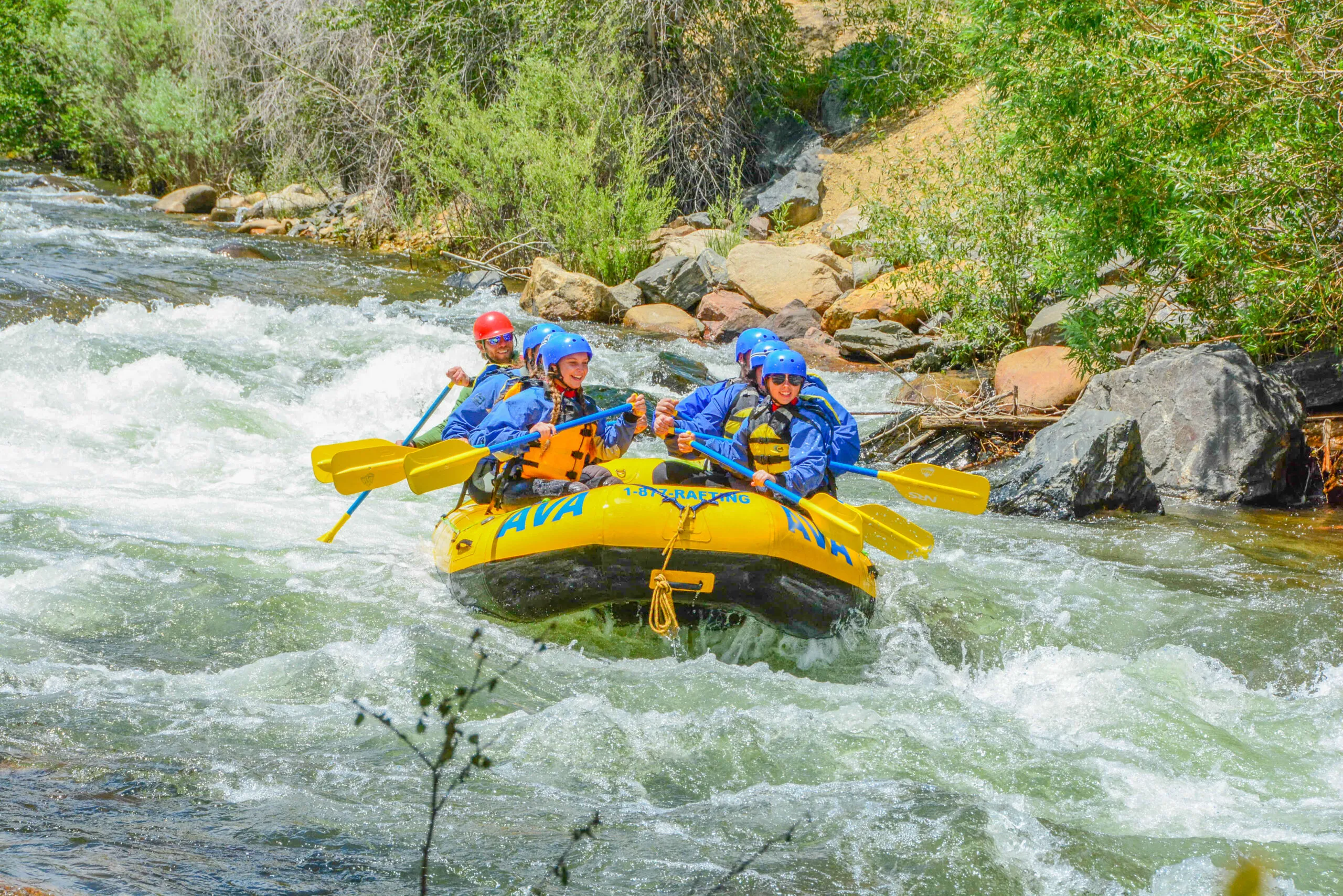Select Your White Water Rafting Colorado Journey Package Now
Select Your White Water Rafting Colorado Journey Package Now
Blog Article
Necessary Skills for Water Rafting
Mastering the art of water rafting requires a combination of accurate abilities and expertise to navigate the unpredictable currents of rivers, making it a thrilling yet possibly unsafe task. From understanding the complexities of river dynamics to swiftwater rescue methods and seamless group communication, the trip down the river demands a mix of knowledge and versatility. White Water Rafting Colorado.
Paddling Techniques
Understanding reliable paddling techniques is crucial for navigating water rafts securely and properly. One essential technique is the forward stroke, where paddlers dip the blade fully into the water and pull it back alongside the plethora to generate propulsion.
Aside from the forward stroke, the draw stroke is necessary for making fast changes or drawing the raft better to a things. By putting the paddle blade perpendicular to the water's surface area and pulling the water towards the raft, paddlers can successfully transform the vessel's instructions. In addition, the backstroke works as an important tool for supporting or reducing the plethora when essential.
River Checking Out
Efficient paddling strategies, such as the forward stroke and draw stroke, play a crucial role in browsing and translating river currents, an ability called river reading. River reading includes the capacity to analyze the speed, depth, and direction of the water circulation to make informed decisions while browsing rapids. By recognizing exactly how the water moves around barriers and through different networks, rafters can choose the finest course to securely pass through the river.
One trick element of river analysis is identifying numerous kinds of currents, consisting of hydraulics, waves, and eddies, and recognizing just how they can affect the plethora. Eddies, for example, are locations where the water flows in a circular activity, typically providing possibilities for remainder or tactical maneuvers. Waves can suggest the visibility of rocks or obstacles, calling for quick modifications in paddling strategy. Hydraulics, commonly known as "holes," are locations where water recirculates back upstream, positioning potential hazards to boatings.
Grasping the ability of river analysis is essential for safe and pleasurable rafting experiences, enabling paddlers to navigate challenging waters with self-confidence and accuracy.

Swiftwater Rescue
Recognizing swiftwater rescue methods is crucial for water rafting fanatics to react successfully in emergency scenarios on fast-flowing rivers. Swiftwater rescue involves a set of specialized abilities and understanding intended at securely extracting individuals from swift-moving water. One essential element of swiftwater rescue is identifying the hazards present in fast-flowing rivers, such as strainers, undercut rocks, and strong currents, to plan and perform successful rescue operations.
Appropriate devices is necessary for swiftwater rescue, consisting of toss bags, rescue ropes, headgears, and individual flotation protection tools. Rafting fanatics need to be experienced at utilizing this tools in high-stress scenarios to make certain the safety and security of themselves and others. In addition, swiftwater rescue methods commonly include team effort and sychronisation among rafters to carry out complicated rescue maneuvers successfully.
Educating in swiftwater rescue is extremely recommended for individuals taking part in water rafting tasks, as it furnishes them with the required skills to take care of emergency situations quickly and effectively. White Water Rafting Colorado. By exercising and comprehending swiftwater rescue methods, water rafting enthusiasts can boost their security and that of their fellow rafters on tough river explorations
Team Interaction
Efficient teamwork in water rafting relies greatly on seamless interaction amongst staff member to make sure coordinated and secure navigating through tough river conditions. Clear and why not look here concise communication is critical for the success of any type of rafting expedition. Group members have to be able to effectively communicate essential details such as paddling commands, warning signals, and navigational guidelines.
In the hectic and often unforeseeable setting of river rafting, precise and prompt communication can mean the difference between a possible calamity and a successful run - White Water Rafting Colorado. Each team participant plays an important role in the general communication procedure, whether it be listening diligently to the overview's guidelines, passing on info to other paddlers, or signaling for help when needed
Establishing an usual language and communication system prior to striking the water is necessary. This makes certain that everyone is on the same web page and recognizes how to interact successfully throughout the rafting trip. By promoting a culture of open communication and YOURURL.com shared regard, rafting teams can boost their efficiency and safety on the river.

Safety Procedures
In the context of water rafting, the structure of team interaction developed during expeditions is more reinforced through rigorous adherence to safety protocols. Safety procedures are paramount in ensuring the well-being of both rafters and overviews throughout water rafting tours. One essential safety protocol is the correct wearing of individual flotation protection tools (PFDs) by every individual on the raft. PFDs are important in emergencies to keep individuals afloat and supply buoyancy. Additionally, rafters need to be skilled in swiftwater rescue other methods and procedures in instance of somebody dropping too far or if the boating tips over.
Another secret security procedure is the complete rundown supplied by guides before getting started on a rafting trip. By purely adhering to these safety protocols, water rafting excursions can be both thrilling and secure for all participants entailed.
Final Thought
To conclude, understanding necessary skills for water rafting is vital for a risk-free and delightful experience on the river. Paddling strategies, river reading, swiftwater rescue, group interaction, and safety and security protocols are all vital elements that add to an effective rafting journey. By developing these abilities, rafters can navigate tough waters with confidence and make certain the safety of themselves and their employee.
Mastering the art of water rafting calls for a combination of exact skills and expertise to navigate the uncertain currents of rivers, making it a thrilling yet potentially dangerous task. By putting the paddle blade perpendicular to the water's surface and pulling the water towards the raft, paddlers can properly transform the vessel's direction.Recognizing swiftwater rescue methods is vital for water rafting enthusiasts to react properly in emergency scenarios on fast-flowing rivers.Reliable team effort in water rafting counts heavily on smooth communication amongst group participants to guarantee worked with and safe navigation through difficult river conditions.In conclusion, understanding vital skills for water rafting is vital for a secure and delightful experience on the river.
Report this page